
Paul Cayard Trains Amateur Sailors for Ocean Globe Race
World champion sailor and leader of the US Sailing Team and Olympic Sailing program, Paul Cayard has taken on another new challenge. In a recent press release, global translation company Translated announced Cayard will train its amateur crew members for the Ocean Globe Race 2023 (OGR23). Translated has entered a Swan 65 named Translated 9 in the 27,000-mile “sprint” around the globe.
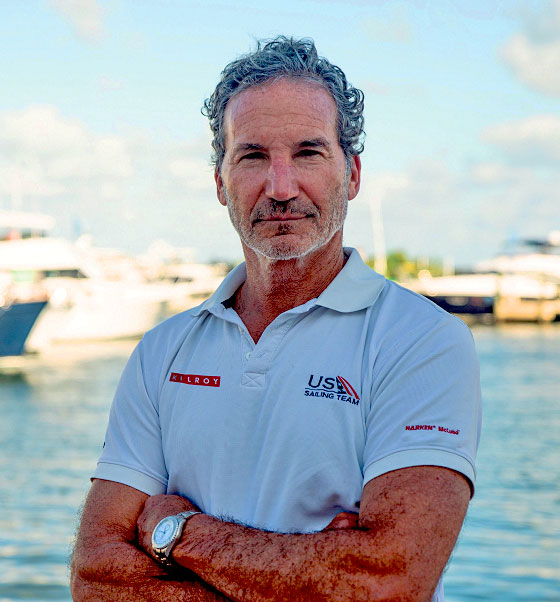
“We are thrilled to begin this journey under the guidance of Paul Cayard, a true legend in sailing,” said Marco Trombetti, co-founder and CEO of Translated. “We’re also grateful to him for supporting us with his wealth of experience, vast knowledge, and positive spirit.”
Cayard is a seven-time world champion and seven-time America’s Cup competitor, and has twice circumnavigated the world. In 1998 he became the first American to win the Whitbread Round the World Race, and in 2005-2006 he placed second in the Volvo Ocean Race with the Disney syndicate Pirates of the Caribbean. He is also a two-time Olympic sailor, having competed in 1984 and 2004. We could wax lyrical for quite some time about Cayard’s sailing accomplishments, but suffice it to say, the crew of Translated 9 is in good hands.
“Sailing requires not only knowledge, but sailing spirit, which means being focused, committed, hard-working, and a good teammate,“ Cayard said. “A crew is much more than simply 10 people on a boat; it is a single mind and body focused on a goal and working to reach it. I am happy to support Translated’s project because this company reflects, in their everyday working life, the same spirit and attitude of a great crew”.
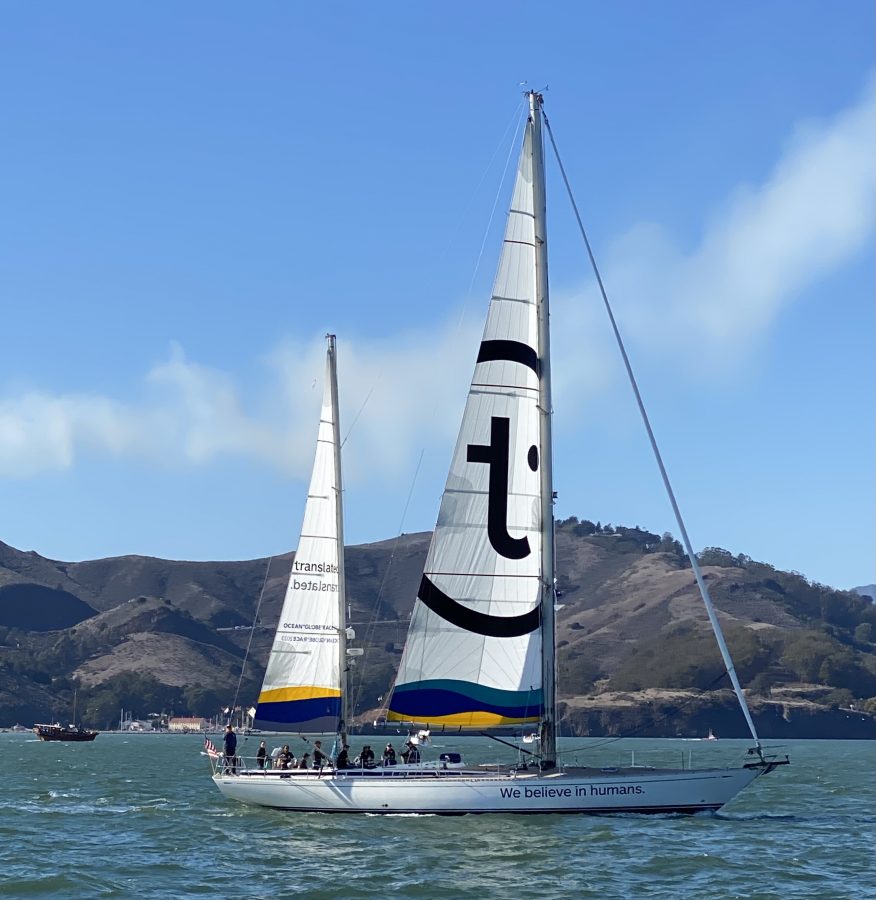
Trombetti and a further 60 tech and language executives have already experienced an introductory session with Cayard, to “not only include tapping into Cayard’s sailing expertise, but his leadership skills.” Those trainees displaying an aptitude for sailing will potentially join Translated 9 on a leg of the race.
According to OGR23 rules, each competing crew must be composed of a maximum of 30% professional sailors, with the remaining being made up of amateurs. Translated is making this adventure open to everyone who wants to apply at www.translated.com/9.
Touted as a race being run “in the spirit of the original 1973 Whitbread Race,” the “retro” Ocean Globe Race, which starts in September 2023, is celebrating its 50th anniversary, “following the same route as the Clipper ships and the inaugural Whitbread Race.”
Kenichi Horie to Solo-Sail San Francisco to Japan — Again — at Age 83
Kenichi Horie is going to do it again. The Japan News reports that the 83-year-old sailor is going to “head back the other way.” It’s been a while since Horie, the famed Japanese sailor, has been in the sailing news, but for those unfamiliar with the source of his renown, we’ll give you a quick rundown. In 1962 he was just 23 years old when he took off from Japan on a 19-ft sailboat named Mermaid, without a passport or money, to sail solo from Japan to San Francisco in 94 days. It was not long after World War II so he was first arrested upon his arrival before Mayor George Christopher welcomed him and gave him a 30-day visa and a key to the city.

Since then he’s made many additional impressive voyages with small craft, and always an environmental message. He has circumnavigated east to west, gone from Hawaii to Okinawa in a pedal-powered boat, and once spent 148 days sailing from Ecuador to Tokyo in a solar-powered boat built of recycled aluminum. In 1999 he sailed from San Francisco to Japan in a catamaran built from 528 beer kegs, and in 2002 he sailed back from Japan to San Francisco in Malts Mermaid III, a replica of the original Mermaid, though built from recycled whiskey barrels. He also solo-piloted a boat from Hawaii to Japan powered only by the waves.
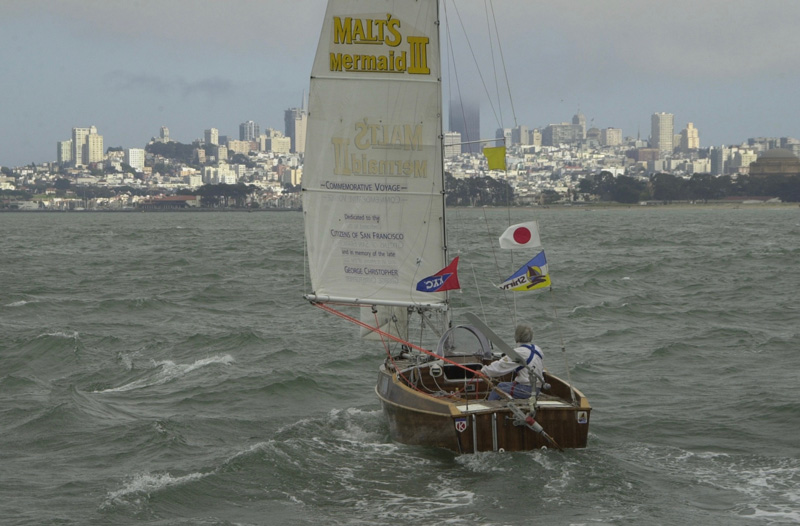
Now, 60 years after earning fame with a nonstop transpacific solo voyage from Japan to San Francisco, adventurer Kenichi Horie plans to head back the other way, from San Francisco to Japan, at the age of 83. This will be his first voyage since his wave-powered trip in 2008. He’s planning to leave San Francisco in March and arrive in Japan two and a half months later in June.

According to the Japan News Horie will build a new, approximately 18-ft boat, the Suntory Mermaid III, designed by Ichiro Yokoyama, the son of the yacht designer of the original Mermaid. At 83 he’ll become the oldest person to solo-sail across the Pacific and will also add one more amazing voyage to a long list of already stunning accomplishments.
Swiftsure Yachts: Serving the West Coast
In the San Francisco Bay Area, contact Swiftsure Yachts broker Allison Lehman at 510.912.5800 or [email protected].
Swiftsure serves the West Coast from Seattle and four other waterfronts.
What to do with Nautical Treasures and Tchotchkes
What kinds of nautical knickknacks adorn your shelves, end tables, and nooks and crannies? What sort of boating bric-à-brac have you either rescued from a dumpster or paid a pretty penny for? What kind of salty maritime detritus is at once worthless in monetary value, but priceless to you in the currency of memories and charm?
Deep in the quarter-berth lockers of my old boat, the 1963 Columbia Challenger Esprit, I found a set of old — very old — navigation lights.
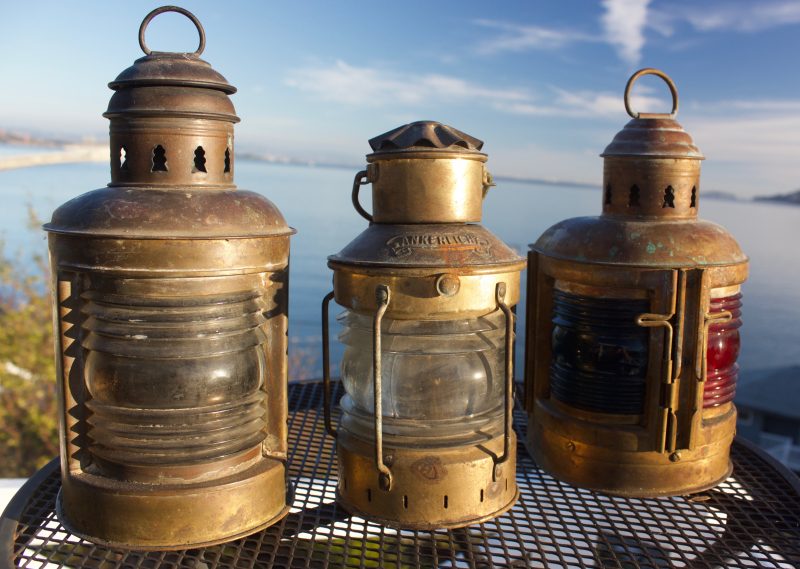
Well, technically they’re not lights at all, but lanterns. Each one has a reservoir for flammable fluid, and a wick. They were, at some point, fully functional as nav lights, but I instantly saw them as lovely maritime antiques. My immediate thought was, “Let’s get some polish on these babies,” but I remembered a nugget of wisdom before I took rag and chemicals to metal. The best way to ruin antiques, I’d heard, is to try to over-aggressively restore them — or to think that they need “restoring” at all.
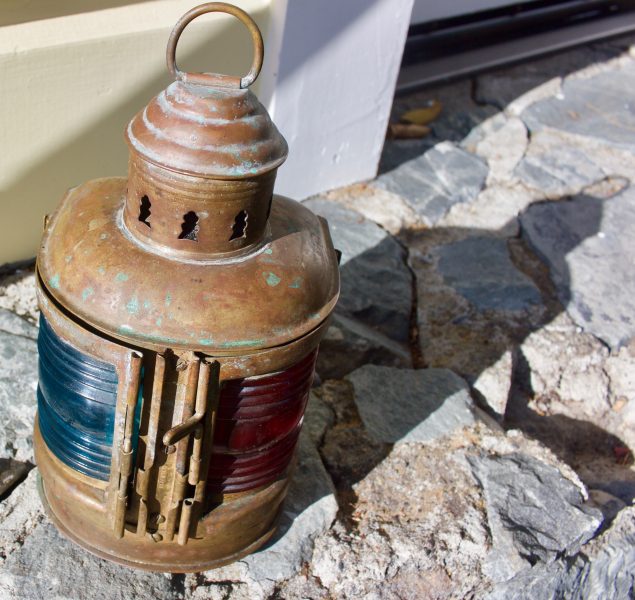
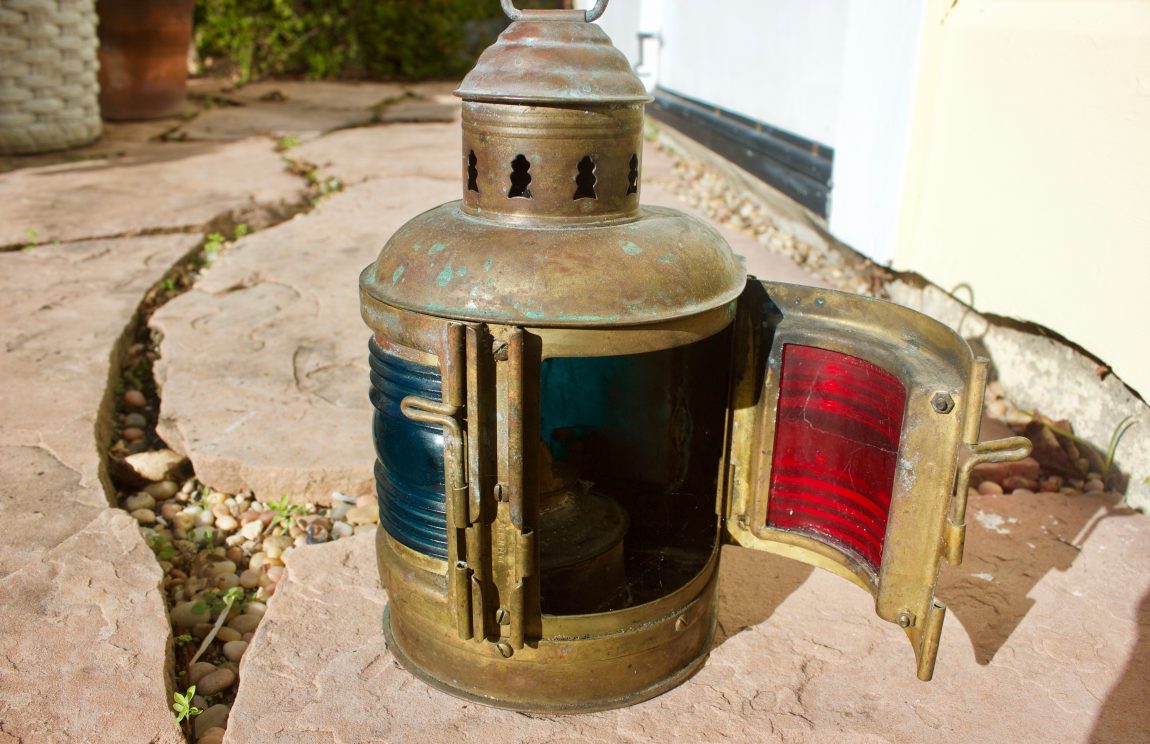
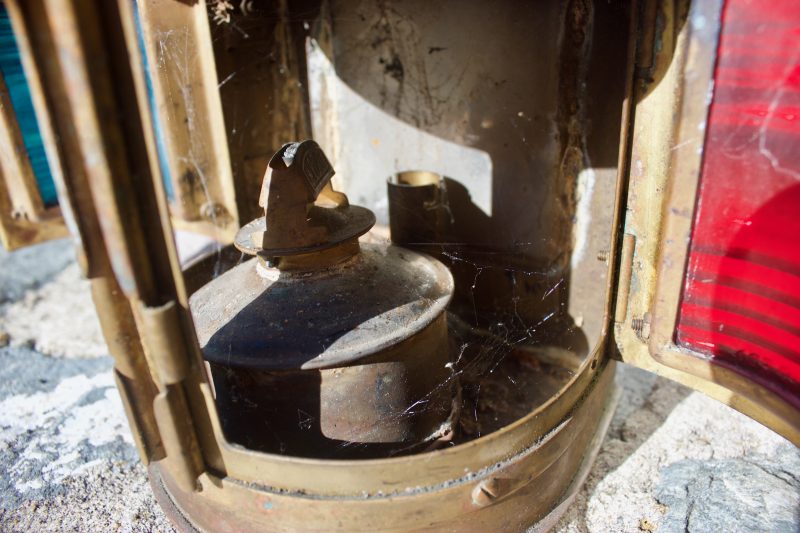
The running lights have lovely splotches of turquoise oxidation splattering the warm, copper-colored metal. While there’s part of me that would like to see some shine on each lantern, I much prefer the weathered, natural look, though I’m still a little curious to see how the sunlight and metal might interact, if the metal were properly encouraged.
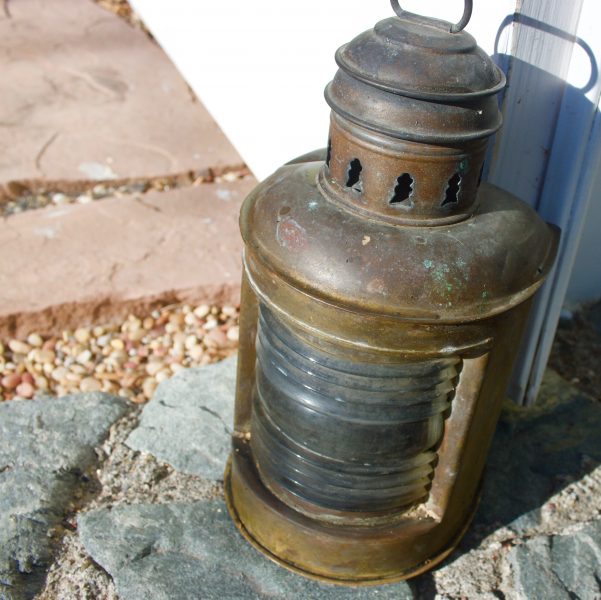
If I were going to experiment with polishing (and I will, eventually), then I’d start with the stern light, which has lots of room — or a “non-display side” — to test a few polishing products and techniques.
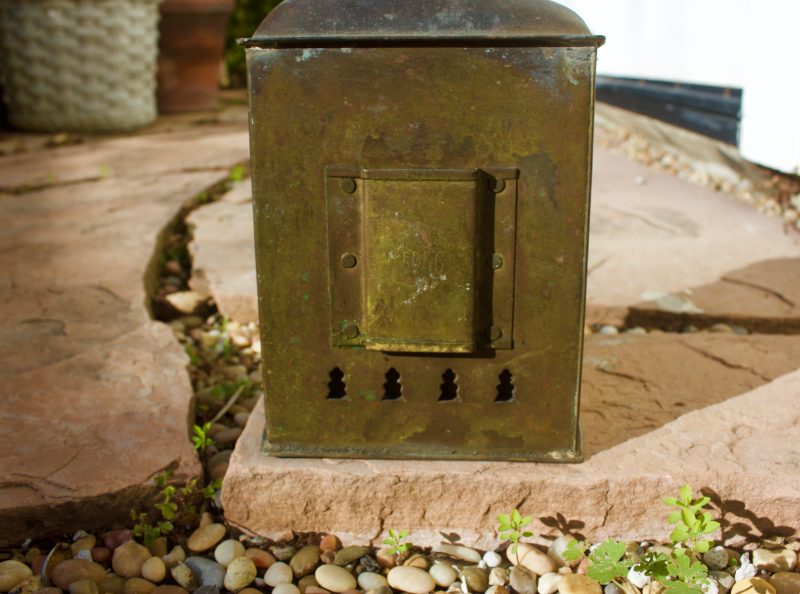
The ‘ankerlight’ seems to be made from a slightly different metal (or a different grade/treatment of the same metal); it’s more blond than gold. If shined, I think it would take on that kind of ostentatious gleam that screams cheap nautical kitsch sold at some overpriced seaside tourist trap. To me, this lantern is just right with some weather on it.
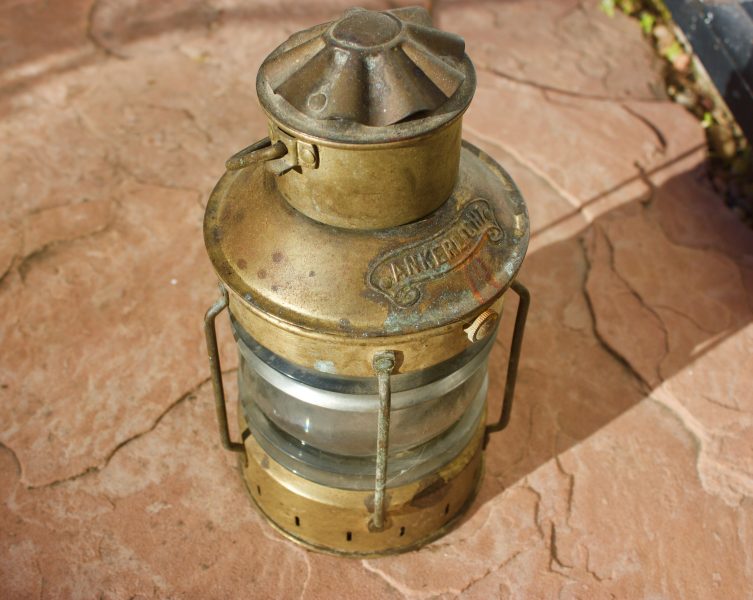
I appreciate my own caution and reserve in not soaking the lanterns in high-octane polishes, but I consider some competence in working with maritime metals as an important addition to my overall knowledge of all things boats. This is certainly one of the more ‘yachty’ sides of seamanship, but surely there are widespread benefits to knowing how to properly treat metal.
I also appreciate that, after years (even decades) of eliminating crap and minimizing my possessions, I finally have the luxury to collect stuff. Indeed, accumulating tchotchkes somehow feels very adult to me. I have moved at least once every two years for well over 35 years of my life, and accumulating charming nautical trinkets feels like a privilege for the non-mobile. (I even find myself wanting to — gasp — go nautical antiquing.)
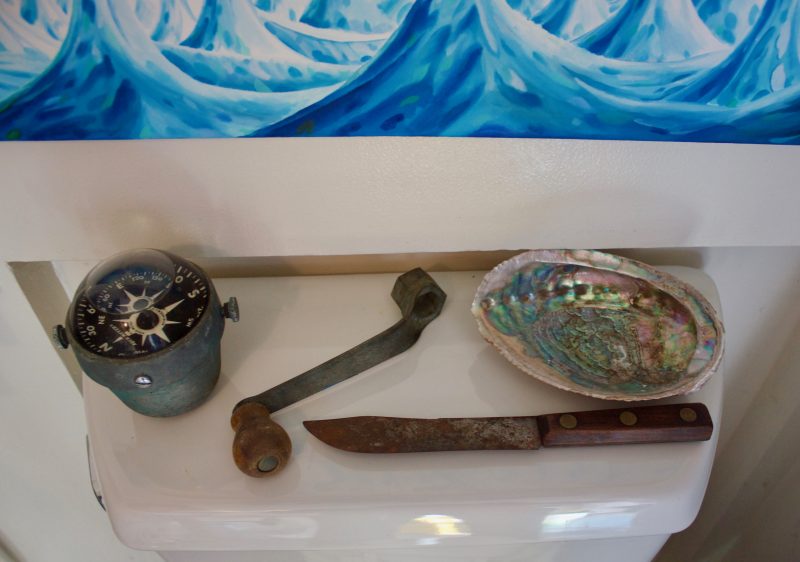
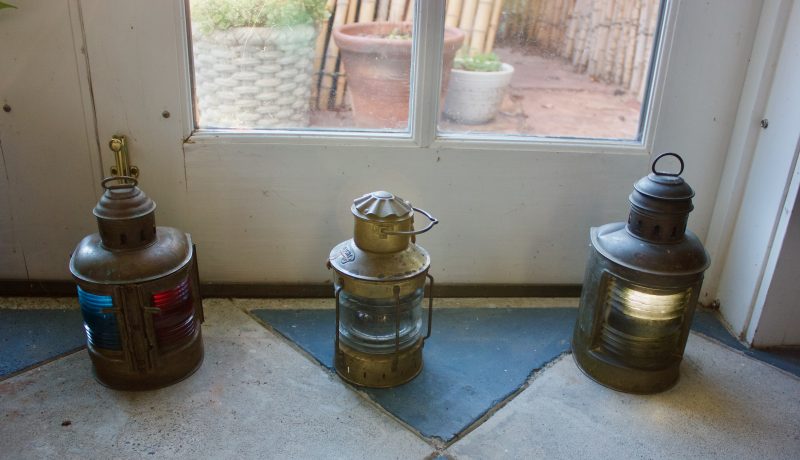
I considered, for a moment, restoring the lanterns to their fossil-fuel-burning status, but realized what a ridiculous idea that was. The lights are already full of black, chalky soot that comes from everywhere and stains everything forever — even soap. (Ask me how I know.) Besides, it’s much easier to put a small LED light in the lamps, rather than burning a fire.
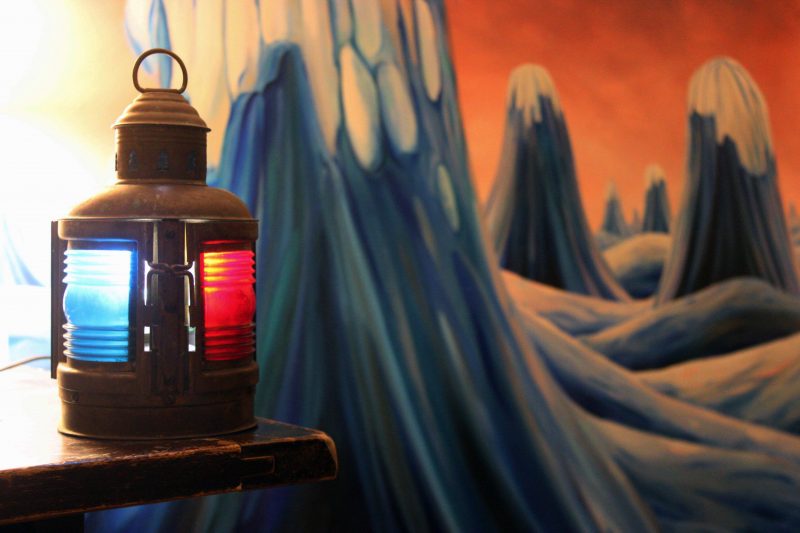
I have so many questions:
— Does anyone out there have a set like this?
— What kind of metal are these lights/lanterns likely to be?
— Would you polish, or no?
Unless Latitude Nation demands that I not attempt to polish the lamps, then what solutions should I use? (Being the Bay Area boy that I am, I would prefer the household and non-toxic to the high-priced shellac found in stores.)
(— Even after some research, I honestly don’t know whether to call bow-mounted port and starboard lights ‘running lights’ or ‘navigation lights’ — or are both correct?)
— And finally, back to that original question: What kinds of treasures do you have, and what kinds of stories are behind them? Please comment below, or email us here.
The title of this story has been changed from the original.
Transat Jacques Vabre Draws to a Close
The 15th edition of the doublehanded Transat Jacques Vabre is drawing to a close with all four divisions having been decided and only the fleet’s back markers still on the race course. With three different course lengths in play for the different divisions, the first boats to sail into Martinique were the Ocean Fifty trimarans followed by the Ultime trimarans, then the IMOCA monohulls, and finally the Class 40 monohulls.
Ocean Fifty Class
First in the Ocean Fifty class and first pair to finish was Sébastien Rogues and Matthieu Souben on Primonial, who completed the course in 15 days, 13 hours, 27 minutes. Behind Primonial was Koesio and Leyton, skippered by Englishman Sam Goodchild and Aymeric Chappellier. With the introduction of the ‘Pro Sailing Tour’ and the rebranding of the class from Multi 50s to Ocean Fiftys, the class has seen a revitalization. The TJV is a good example of why. The boats are fast, fun and seaworthy. There is great parity among the fleet, with the older boats leading the new builds into Martinique.
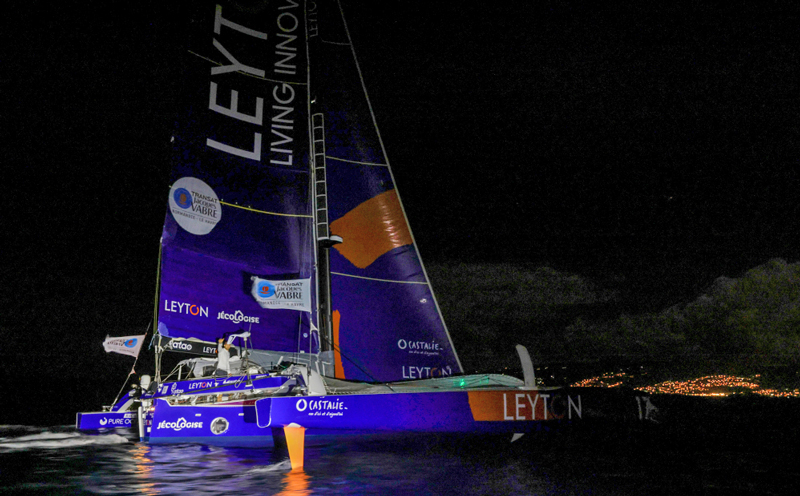
Ultime Trimarans
The fourth team into Martinique and the first non-Ocean Fifty was Franck Cammas and Charles Caudrelier on Maxi Edmond de Rothschild, also known as Gitana 17. Arguably the most anticipated division in this TJV, the race saw the major debut for both Armel le Cléac’h’s new Banque Populaire XI and François Gabart’s new SVR Lazartigue trimarans. While the new boats are being sorted out and brought up to speed, Maxi Edmond de Rothschild left no doubt as to who is still fastest in the Ultime division by putting together an impressive wire-to-wire victory. They were never truly challenged. The most exciting battle in the class was between SVR Lazartigue and Banque Populaire XI, with SVR Lazartigue making a brilliant comeback in the latter stages of the race to finish in second place.
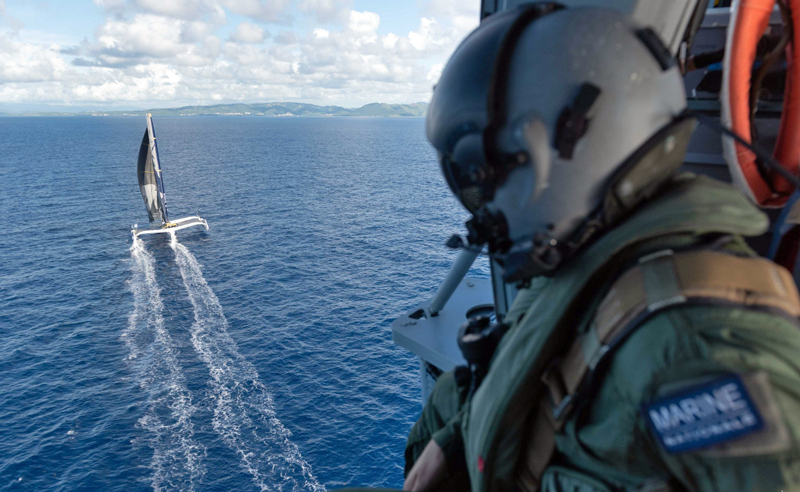
IMOCA 60 Fleet
The 22-boat IMOCA fleet again provided some fantastic racing, with Thomas Ruyant and Morgan Lagravière on LinkedOut ending Apivia’s recent dominance over the class by completing an impressive performance to pull away to victory. Apivia and Charal battled all the way into Martinique to finish second and third respectively. Sébastien Simon and Yann Eliès onboard Arkea Paprec managed an impressive fourth-place finish in a boat that has been plagued by reliability issues but has shown flashes of brilliance. The only American in the IMOCA fleet, Charlie Enright on 11th Hour Racing’s ‘A’ boat Malama, sustained non-structural keel damage. Charlie and co-skipper Pascal Bidegorry had to ‘cruise’ into Martinique, dropping from the top five or six down to 13th place.
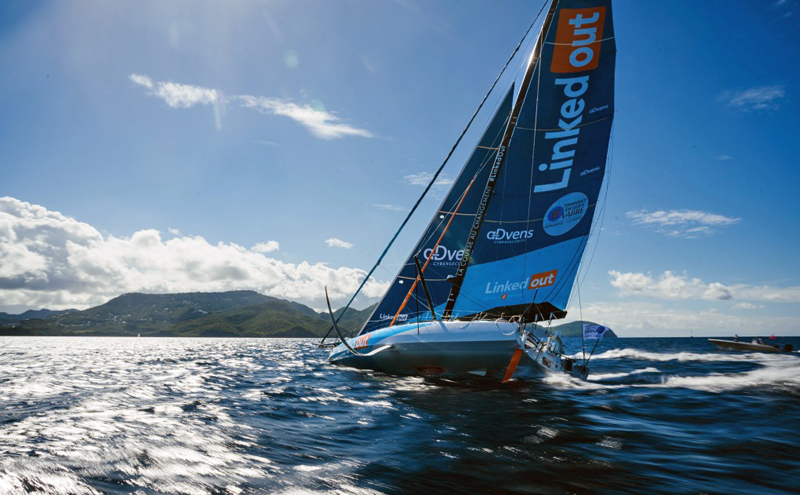
Class 40 Division
By far the largest division in the TJV, the Class 40s had a long and difficult passage that was plagued by light air along the European and African coasts before enjoying a nice trade-wind romp to Martinique. Antoine Carpentier and Pablo Santurde del Arco on Redman completed a nice come-from-behind victory. They shook off a slow start before controlling the fleet to win by about an hour after more than 21 days at sea. Valentin Gautier and German co-skipper Simon Koster on Banque du Léman finished in second place, with the rest of the fleet following in close succession. The fleet’s lone American, the Bay Area’s Alex Mehran and co-skipper Merfyn Owen on Polka Dot remain in 33rd place after an ill-advised flyer early in the race. The duo is showing good speed and has about 700 miles left to sail.


